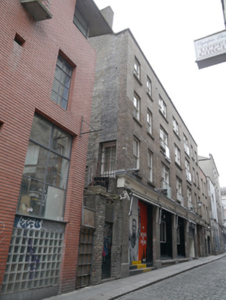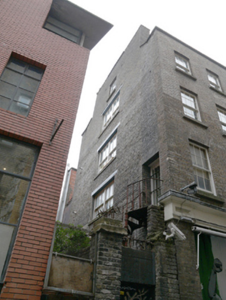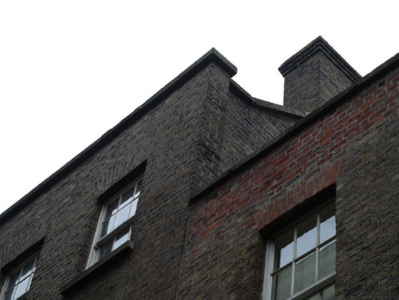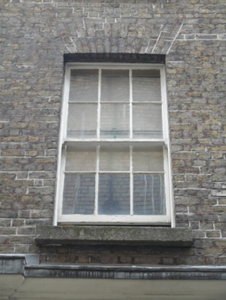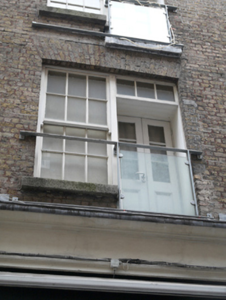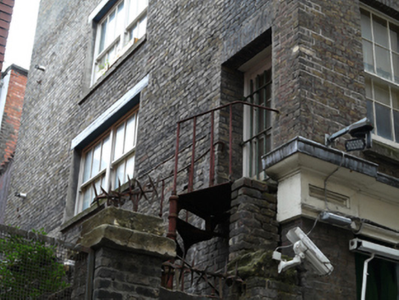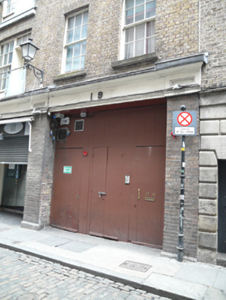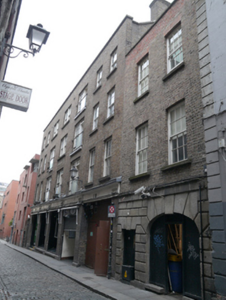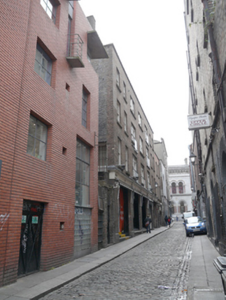Survey Data
Reg No
50020080
Rating
Regional
Categories of Special Interest
Architectural, Social
Previous Name
China Tea Company
Original Use
Store/warehouse
In Use As
Public house
Date
1840 - 1860
Coordinates
315554, 234081
Date Recorded
17/02/2015
Date Updated
--/--/--
Description
Attached five-bay four-storey former warehouse, built c.1850, having shopfront to front (west) elevation and multiple-storey extension to rear (east) elevation. Now in use as apartments with nightclub to ground floor. Pitched roof hidden behind brown brick parapet having granite coping, and brown brick chimneystacks with stepped cornice. Brown brick, laid in Flemish bond, to wall to front with brown brick pilasters, cut granite plinth course and carved fascia and cornice to shopfront. Brown brick laid in English garden wall bond to walls to side (north and south) elevations. Square-headed window openings with cut granite sills and six-over-six pane timber sliding sash windows to upper floors to front. Square-headed window openings to first and second floors of north gable with exposed steel lintels, paired replacement windows, rendered reveals and cut granite sills. Square-headed window openings to shopfront having replacement windows and sills. Square-headed door openings, those to upper floors to front with replacement doors, windows and recent glazed balustrades, to first floor of north elevation with replacement door and external metal spiral stairs, those to shopfront having replacement doors. Square-headed opening to south end bay with timber battened gates. Situated on the east side of Sycamore Street.
Appraisal
This imposing building was a purpose-built warehouse constructed for the Bewley Tea Company, which began to import tea from China to Dublin in 1835, expanding into the café trade in the 1890s. Its former industrial use as a warehouse remains evident in its scale and the retention of industrial sized openings at upper floor levels. Historic brickwork and windows add to the character of the building. The Bewley family, who were Quakers, had strong ties to the area and were patrons of the nearby Friends Meeting House. It is a good example of nineteenth-century industrial architecture in an urban setting.

